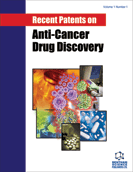Abstract
“How do drugs cross the plasma membrane?” this may seem like a trivial question. This question is often overlooked to focus primarily on the different complex macro-molecular aspects involved in drug delivery or drug resistance. However, recent studies have highlighted the theme that to be fully understood, more knowledge of the underlying biology of the most complex biological processes involved in the delivery and resistance to drugs is needed. After all, why would a drug interact with a transporter then subsequently be excluded from P-glycoprotein (P-gp) expressing drug resistant cells? What are the determinants of this transition in behavior? Full consideration of the physical biology of drug delivery has allowed a better understanding of the reasons why specific membrane proteins are upregulated or overexpressed in drug resistant cells. This, in turn, allows us to identify new targets for drug chemicals. Better yet, it increases the significance of recents patents and underlines their importance in multi drug resistance.
Keywords: Cell membrane, drug delivery, drug resistance, pharmacokinetics, physical biology, antitumor agents, diffusion, hydrophobicity, cytosolic pH
Recent Patents on Anti-Cancer Drug Discovery
Title: Teaching New Dogs Old Tricks: Membrane Biophysical Properties in Drug Delivery and Resistance
Volume: 6 Issue: 3
Author(s): Nina Milosavljevic, Adam Blanchard, Miriam L. Wahl, Salvador Harguindey, Mallorie Poet, Laurent Counillon and Cyril Rauch
Affiliation:
Keywords: Cell membrane, drug delivery, drug resistance, pharmacokinetics, physical biology, antitumor agents, diffusion, hydrophobicity, cytosolic pH
Abstract: “How do drugs cross the plasma membrane?” this may seem like a trivial question. This question is often overlooked to focus primarily on the different complex macro-molecular aspects involved in drug delivery or drug resistance. However, recent studies have highlighted the theme that to be fully understood, more knowledge of the underlying biology of the most complex biological processes involved in the delivery and resistance to drugs is needed. After all, why would a drug interact with a transporter then subsequently be excluded from P-glycoprotein (P-gp) expressing drug resistant cells? What are the determinants of this transition in behavior? Full consideration of the physical biology of drug delivery has allowed a better understanding of the reasons why specific membrane proteins are upregulated or overexpressed in drug resistant cells. This, in turn, allows us to identify new targets for drug chemicals. Better yet, it increases the significance of recents patents and underlines their importance in multi drug resistance.
Export Options
About this article
Cite this article as:
Milosavljevic Nina , Blanchard Adam, L. Wahl Miriam, Harguindey Salvador , Poet Mallorie, Counillon Laurent and Rauch Cyril, Teaching New Dogs Old Tricks: Membrane Biophysical Properties in Drug Delivery and Resistance, Recent Patents on Anti-Cancer Drug Discovery 2011; 6 (3) . https://dx.doi.org/10.2174/157489211796957829
| DOI https://dx.doi.org/10.2174/157489211796957829 |
Print ISSN 1574-8928 |
| Publisher Name Bentham Science Publisher |
Online ISSN 2212-3970 |
 2
2
- Author Guidelines
- Bentham Author Support Services (BASS)
- Graphical Abstracts
- Fabricating and Stating False Information
- Research Misconduct
- Post Publication Discussions and Corrections
- Publishing Ethics and Rectitude
- Increase Visibility of Your Article
- Archiving Policies
- Peer Review Workflow
- Order Your Article Before Print
- Promote Your Article
- Manuscript Transfer Facility
- Editorial Policies
- Allegations from Whistleblowers
Related Articles
-
HR MAS MR Spectroscopy in Metabolic Characterization of Cancer
Current Topics in Medicinal Chemistry The Ubiquitous Choline Transporter SLC44A1
Central Nervous System Agents in Medicinal Chemistry Pharmacogenetics of the Cytochromes P450
Current Topics in Medicinal Chemistry The Possible Role of Infertility Drugs in Later Malignancy: A Review
Current Medicinal Chemistry Difference Gel Electrophoresis: Application in Quantitative Proteomics Research
Current Proteomics Current Advances in Vehicles for Brain Gene Delivery
Current Gene Therapy Novel Targets for Antiinflammatory and Antiarthritic Agents
Current Pharmaceutical Design Immunocal® and Preservation of Glutathione as a Novel Neuroprotective Strategy for Degenerative Disorders of the Nervous System
Recent Patents on CNS Drug Discovery (Discontinued) In Silico Study of Desmosdumotin as an Anticancer Agent: Homology Modeling, Docking and Molecular Dynamics Simulation Approach
Anti-Cancer Agents in Medicinal Chemistry A Review of Sirt1 and Sirt1 Modulators in Cardiovascular and Metabolic Diseases
Recent Patents on Cardiovascular Drug Discovery New Frontiers in Cystic Fibrosis Therapy: The Case of Stem Cells
Clinical Immunology, Endocrine & Metabolic Drugs (Discontinued) Recent Advance in the Research of Flavonoids as Anticancer Agents
Mini-Reviews in Medicinal Chemistry A Systems Biology Approach for miRNA-mRNA Expression Patterns Analysis in Rheumatoid Arthritis
Combinatorial Chemistry & High Throughput Screening In Vivo Bacterial Imaging without Engineering; A Novel Probe-Based Strategy Facilitated by Endogenous Nitroreductase Enzymes
Current Gene Therapy Garcinia Benzophenones Inhibit the Growth of Human Colon Cancer Cells and Synergize with Sulindac Sulfide and Turmeric
Anti-Cancer Agents in Medicinal Chemistry Clinical Development of Angiogenesis Inhibitors to Vascular Endothelial Growth Factor and Its Receptors as Cancer Therapeutics
Current Cancer Drug Targets Pyrrolizidine Alkaloids and their Biological Properties from Indian Heliotropium Species
Current Bioactive Compounds The Potential use of Dendritic Cell-based Immunotherapy for Treatment of Pancreatic Cancer
Immunology, Endocrine & Metabolic Agents in Medicinal Chemistry (Discontinued) Recent Kinase and Kinase Inhibitor X-ray Structures: Mechanisms of Inhibition and Selectivity Insights
Current Medicinal Chemistry Trends in Cell-Based Electrochemical Biosensors
Current Medicinal Chemistry


























